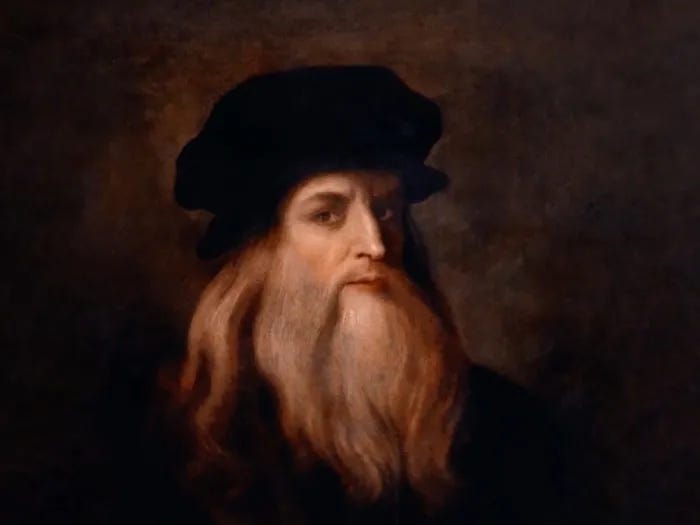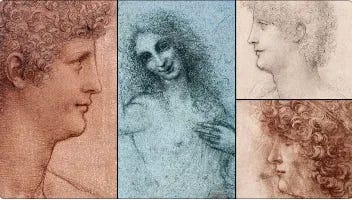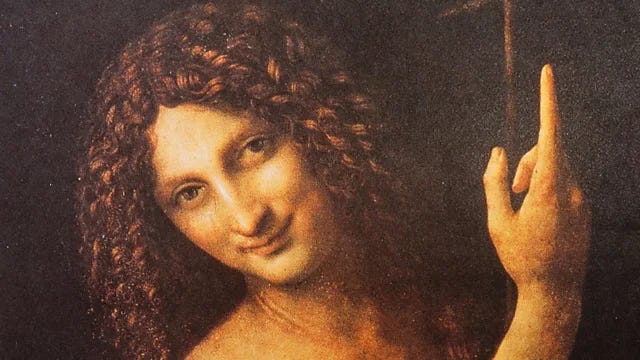'Leonardo da Vinci,' the Supreme Renaissance Man
Ken Burns' documentary film "Leonardo da Vinci" (PBS)
by Tim Pfaff
Ken Burns documentaries are their own category. There are documentaries, and then there are Ken Burns documentaries. Burns' latest, with Sarah Burns and David McMahon, "Leonardo da Vinci" (PBS), crowns his achievements to date. It blends history and culture with the sensibility and sensitivity that both Burns and his subject share.
Even in his own time, the 15th century, the Italian Renaissance, Leonardo di ser Piero da Vinci was the archetype of what we now call the Renaissance Man. Today he's perhaps best remembered as a painter, famously of the fresco of "The Last Supper" and the oil painting "Mona Lisa." The Burns documentary places him in the category of geniuses that includes Shakespeare and J.S. Bach.
The new documentary also acknowledges his world-changing work as a sculptor, draftsman, scientist, architect, mathematician, and even military munitions innovator. There was, it credibly asserts, nothing Leonardo found in his environment about which he was not curious and spurred to deeper investigation and understanding.
But early on, the documentary, narrated by Keith David, notes that among the things he famously was, he was known in his lifetime as "good company." The two-episode, three-hour documentary capitalizes on that by making him good company today.
The queer Leonardo
The Leonardo story is told as linearly as possible for a subject with such overlapping talents. What's telling is that it isn't confined to the account of Leonardo's homosexuality, well known in his own day, to its own chapter or an appendix. Early on Burns' writers declare, without sensation, that Leonardo was, knowingly, what we would now call "gay," and that that was, if not common, generally accepted in his own time.
That said, they also note that as a young man Leonardo was jailed for being found in a male brothel, which qualifies contentions about the acceptability of homosexuality then. Two of his students or apprentices became life companions.
Gian Giacomo Caprotti da Oreno was introduced to his studio, where he proved more a hellion than a disciple, but with the nickname of Salaí (meaning 'Little Devil') stayed with Leonardo thereafter, lending his image to a number of Leonardo's visual works. Leonardo called another student, Francesco Melzi, his best student, and Count Melzi, too, remained a literal follower to the end.
The notebooks
The documentary returns time and again to the astonishing notebooks Leonardo kept throughout his life. Accompanying his own text (voiced by Adriano Giannini), written backwards to be read in a mirror (likely to keep possible censors at bay), are the innumerable, dazzling illustrations Leonardo made to document his own discoveries and, given some of their un-achievability in his own time, dreams.
His lifelong desire for human flight is represented both in his detailed drawings of bird and bat wings and his drafts of imagined flying machines. The results of his investigation of human anatomy, much of which was learned by dissecting cadavers, are in themselves marvels of drawing, true to their subjects. His drawing of a child in the womb strikes people dumb.
More astonishing yet, modern science and medicine have found most of those drawings accurate. Burns repeatedly notes that Leonardo's consummate skills in drawing underwrote his most ambitious scientific inquiries, and that art and science did not merely coexist in his work; his art enabled and augmented his science.
Perfectionism gets a bad name these days, but the catalog of his many unfinished works hints at its centrality in his world view. "Tell me anything that was ever done," the film quotes him as saying. Leonardo didn't just spend years on individual projects, he often simply kept the works he had undertaken on commission. But the commissioners kept coming, and coming back.
Mystery of Mona
In a move reflective of Walter Isaacson's masterful (and, as a book, beautiful) biography of Leonardo, the film sees Leonardo's life work as culminating in "La Gioconda" (the "Mona Lisa").
How much the portrait mattered to Leonardo is reflected in the fact that he carried the canvas across Italy throughout his late career, always refining and deepening it. He also took other paintings we would now consider masterpieces on the road with him….
The art of the documentary
Burns and company bring their own visuals to bear on the documentary. Paired split-screen with anatomical drawings are modern pictures and film of the human body. Over a soundtrack that largely disappears (as it should in such a project), there's a vast array of exemplary contemporary art not by Leonardo that provides expanded perspectives, sometimes literally.
'Leonardo da Vinci,' by Ken Burns, Sarah Burns, and David McMahon; streaming on www.pbs.org
www.kenburns.com







